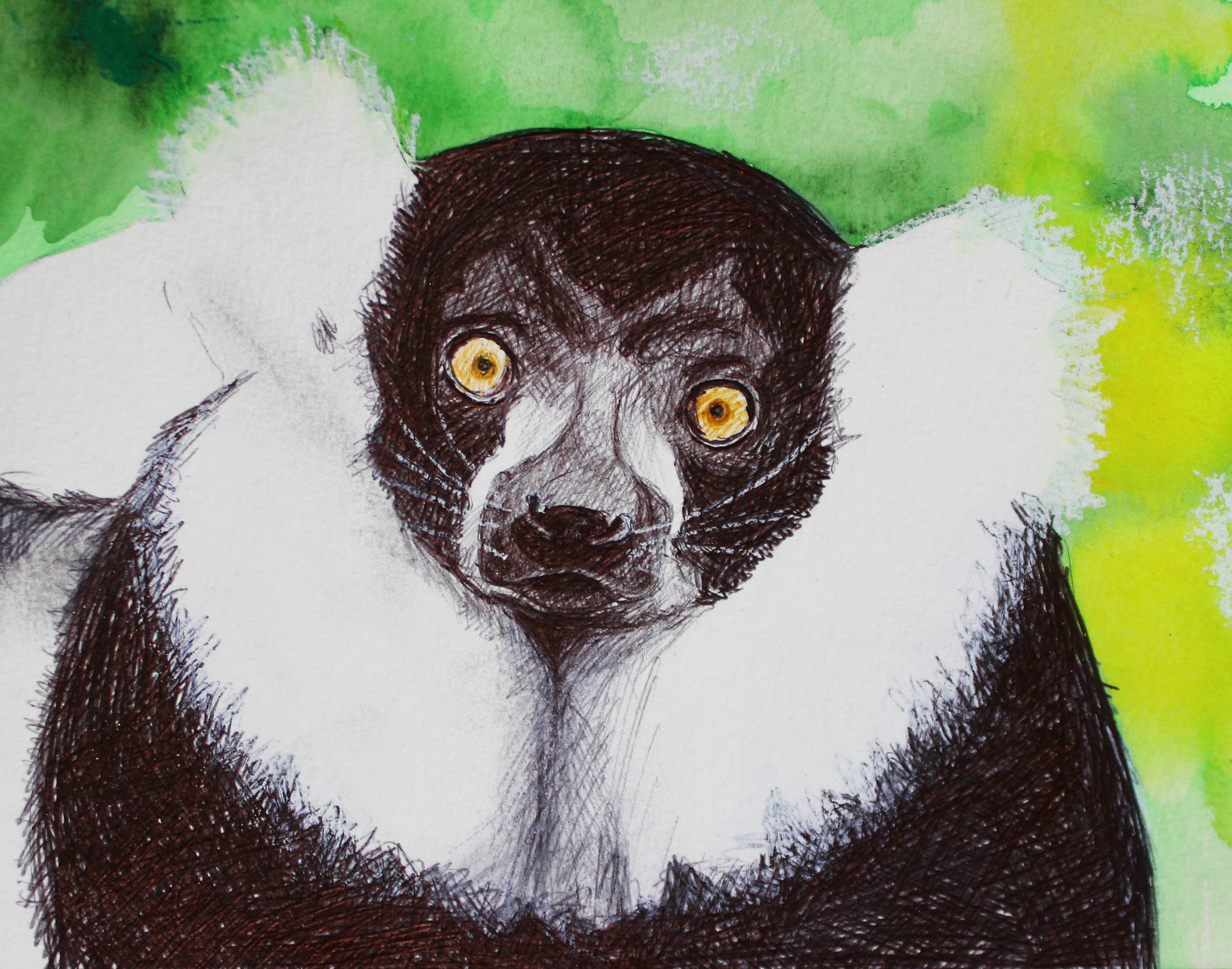Ballpoint pen and watercolour on paper, 2022, A5 size.
1. Animal: Black and White Ruffed Lemur (Varecia variegata variegata)
- Like all lemur species, black-and-white ruffed lemurs can only be found in Madagascar. They have a patchy distribution in eastern Madagascar, with three subspecies identified along the range.
- Ruffed lemurs are the largest quadrupedal lemur in Madagascar. Their bodies are around 50cm long and their tails are slightly longer at around 58cm which helps them balance as they move through the canopies of the rainforest.
- Weighing up to 4kg, black and white ruffed lemurs are the largest pollinators in the world: as they feed, pollen sticks to the ruffs of fur around their faces and gets transported from tree to tree. Their diet consists mostly of fruit, nectar, and pollen – they are considered the most frugivorous of all the lemurs.
- Black-and-white ruffed lemurs make a nest for their young, placing it in the trees roughly 10 to 20 meters above the ground out of branches, leaves and other foliage. Young stay in the nest while the female forages and until they are more independent.
2. Why they are endangered?
Black and white ruffed lemurs are critically endangered. Primary threats include habitat loss due to slash-and-burn agriculture, logging, and mining; and bushmeat hunting. They are susceptible to habitat disruption brought about by selective logging.
